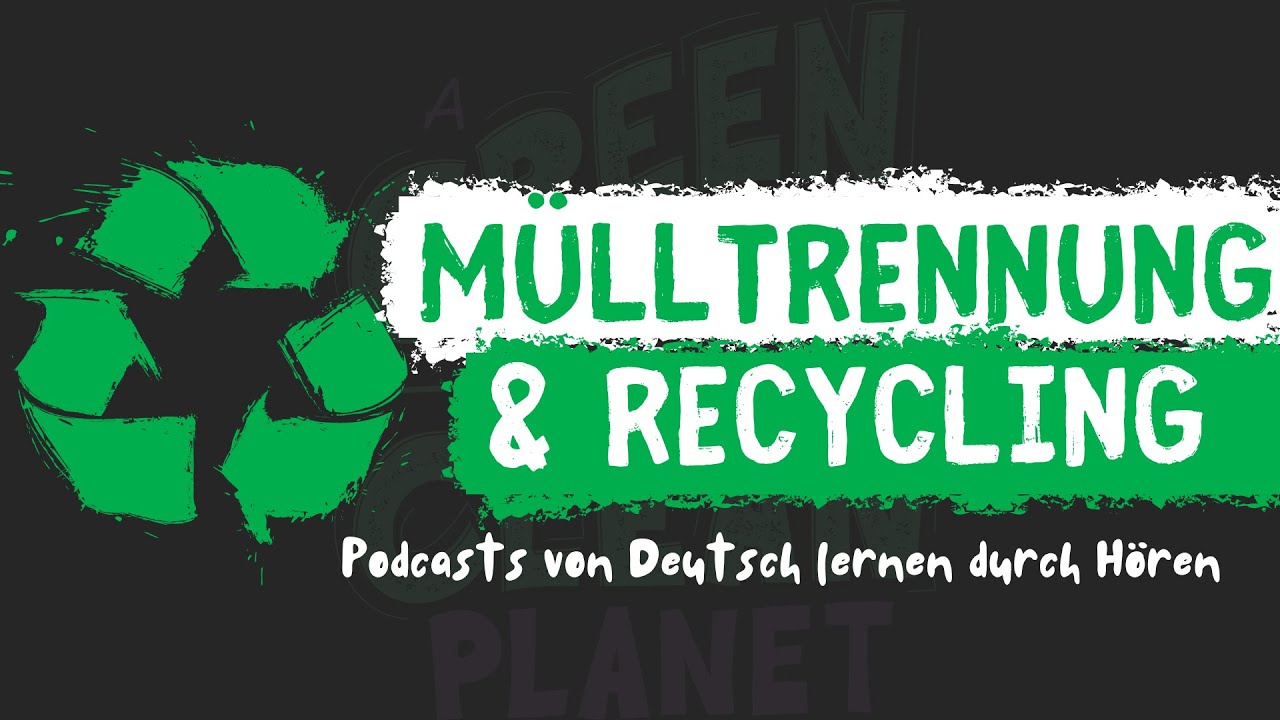1.6 Recycling municipal waste
Summary
TLDRThis module delves into recycling's role in resource recovery, focusing on paper, glass, plastic, and metal waste. It explores recycling processes, global production and trade data, and environmental impacts. The script reveals that recycling is beneficial, despite challenges like contamination and varying quality. It also discusses recycling rates across different income levels, emphasizing recycling's global significance and environmental advantages.
Takeaways
- 🌍 Recycling is a key component of the triple R strategy (Reduce, Reuse, Recycle) for resource recovery.
- 🏭 Reduction is often achieved through policy interventions, such as the ban on plastic bags by the government of Zanzibar in 2011.
- 🔄 Reuse is a common practice worldwide, exemplified by repurposing electronic waste to create jewelry.
- 📚 The module focuses on recycling, particularly paper, cardboard, glass, plastics, and metals, with case examples from low- and middle-income countries.
- 🌲 Paper recycling involves sorting, repulping, pressing, and drying, but it cannot fully close the loop due to paper mass loss and fiber shortening.
- 📈 Asia leads in paper and paperboard consumption, contributing 45% to the global total in 2012.
- 🍽 Glass recycling is efficient as it can be remelted without quality loss, unlike paper, which degrades in strength.
- 🚰 Recycling glass reduces environmental impacts by decreasing inputs and outputs compared to production from virgin materials.
- 🛍️ Plastic recycling is complex due to contamination and mixed types, but it has more environmental benefits than not recycling, as shown by comparative environmental impact studies.
- 🔩 Metal recycling, particularly of iron and aluminum, is energy-efficient and helps conserve limited virgin materials.
- ♻️ Recycling rates vary globally, with no clear correlation to income levels, indicating that both high-income and lower-income countries can achieve high recycling rates.
Q & A
What are the three components of the resource recovery aspect or triple R?
-The three components of the resource recovery aspect, also known as triple R, are Reduce, Reuse, and Recycle.
Why is recycling important in the context of municipal solid waste?
-Recycling is important because it helps to manage waste efficiently by recovering valuable materials such as paper, glass, plastics, and metals, which can be reused in production processes, thereby reducing the need for virgin resources and minimizing environmental impact.
What are the three types of waste paper commonly recycled?
-The three types of waste paper commonly recycled are: post-consumer paper (e.g., newspapers and magazines), corrugated board (typically from commerce), and high-grade paper (such as printing paper from businesses).
What are the environmental benefits of recycling paper compared to producing paper from virgin materials?
-Recycling paper reduces wood, water, and electricity consumption, although it increases energy usage and certain emissions. Overall, recycling paper has a better environmental performance compared to landfilling or incineration, especially as recycling helps preserve trees, which act as carbon sinks.
What is cullet and how is it used in glass recycling?
-Cullet refers to broken glass pieces that are remelted and used to produce new glass bottles. Recycling cullet reduces furnace energy consumption, prolongs furnace life, and prevents quality loss as long as contaminants are removed.
What are the challenges of recycling plastic compared to other materials?
-Plastic recycling is challenging due to the presence of contaminants (such as organic waste) and the mixture of different plastic types, which compromises the material's strength and flexibility when recycled together.
What are the two overall classes of plastic recovery?
-The two overall classes of plastic recovery are energy recovery (where energy is recovered in the form of heat and electricity) and material recovery (which includes chemical recycling and mechanical recycling).
How does recycling metals like steel and aluminum impact the environment?
-Recycling metals like steel and aluminum has significant environmental benefits, including energy savings, reduced emissions, and the conservation of natural resources. Remelting scrap metals is much more energy-efficient compared to producing metals from virgin materials.
What are some of the global trends in recycling for metals?
-Globally, more than a third of all aluminum and steel produced originates from recycled scrap. The recycling market for metals is concentrated in Asia, where approximately 50% of the world's recycling plants are located.
Do recycling rates correlate with a country’s income level?
-Recycling rates do not show a clear correlation with income levels. While high-income countries tend to have higher recycling rates, many middle- and low-income countries also achieve high recycling rates.
Outlines

Этот раздел доступен только подписчикам платных тарифов. Пожалуйста, перейдите на платный тариф для доступа.
Перейти на платный тарифMindmap

Этот раздел доступен только подписчикам платных тарифов. Пожалуйста, перейдите на платный тариф для доступа.
Перейти на платный тарифKeywords

Этот раздел доступен только подписчикам платных тарифов. Пожалуйста, перейдите на платный тариф для доступа.
Перейти на платный тарифHighlights

Этот раздел доступен только подписчикам платных тарифов. Пожалуйста, перейдите на платный тариф для доступа.
Перейти на платный тарифTranscripts

Этот раздел доступен только подписчикам платных тарифов. Пожалуйста, перейдите на платный тариф для доступа.
Перейти на платный тарифПосмотреть больше похожих видео

We Are Stardust - Materials Recovery Facility

How Recycling Works

#31 Mülltrennung & Recycling in Deutschland | Deutsch lernen durch Hören

Video Materi Pembelajaran PRAKARYA - Kerajinan Limbah Anorganik !!! SMP/MTs ( Terlengkap )

PILAH SAMPAH DARI RUMAH ADALAH KUNCI!

TUGAS FISIKA 3.4 - PENGELOLAAN SAMPAH DENGAN PRINSIP 4R (AVENGERS)
5.0 / 5 (0 votes)
